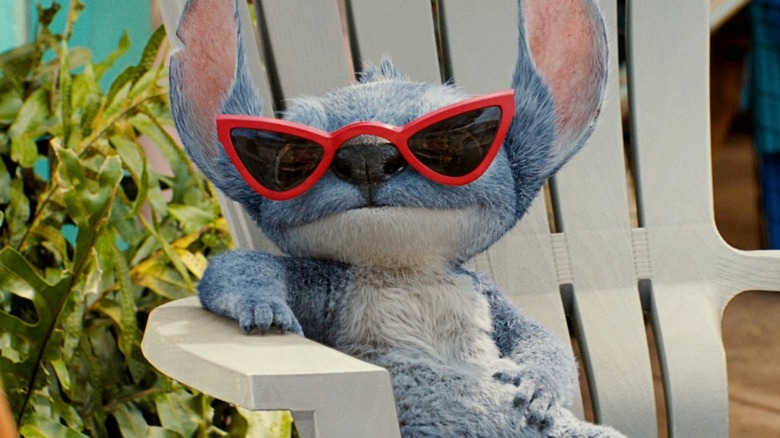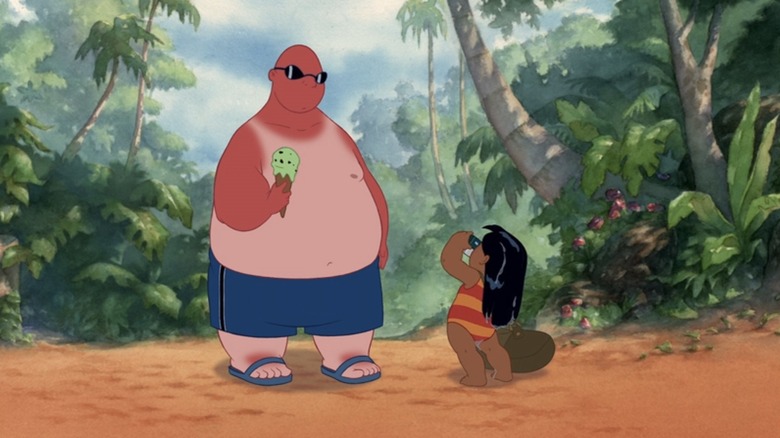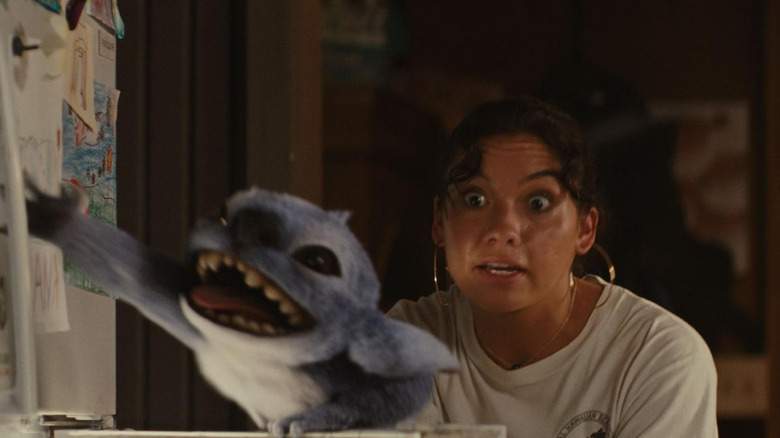Disney's Lilo & Stitch Remake Is Too Afraid Of The Original Movie's Hard-Hitting Message
"Lilo & Stitch" creator and co-director Chris Sanders randomly chose Hawaii for the film's setting after recently vacationing there, but it ended up being the perfect place for his story of displacement and belonging. The filmmakers behind "Lilo & Stitch" genuinely respected Hawaiian culture and cared about representing it fairly, making frequent research trips to study all aspects of Pacific Islander living.
"There was a lot of careful observation of the folks we met, and trying to channel that regular-life-in-Hawaii feel into the movie so that it didn't come across as just people in hula skirts standing on a beach, like Blue Hawaii," co-writer/co-director Dean DeBlois explained to Vulture. Since the filmmakers were, after all, two white men, they had a responsibility to portray the Native experience with reverence, which Sanders rightfully acknowledges:
"Dean and I have no business telling a Hawaiian story. You can tell stories like that, but then you find people who do have a business there. So we reached out to as many people as we could that lived there."
They closely examined luau dancers' every graceful glide and heard the hardships of a young woman who inspired Nani's resilient attitude. Although still within the confines of a family-friendly Disney movie, the animated "Lilo & Stitch" wasn't afraid to acknowledge — however subtly — Hawaii's complicated history.
Despite being co-written by a Native Hawaiian, Chris Kekaniokalani Bright (whose mother led the Kamehameha Schools Children's Chorus on the soundtrack), the new version completely erases this cultural commentary. The live-action "Lilo & Stitch" adaptation coasts purely on the aesthetics of beautiful beaches, hula dancing, and surfing.
Hawaii's tourist problem
The remake completely erases one of Lilo's quirks, which held a deeper meaning about colonialism. Although a major part of the economy, tourism in Hawaii is an issue because it inflates housing prices and destroys sacred lands. The animated Lilo likes to take photographs of the pudgy, sunburnt tourists. She gawks at them like they would do to her as a little Native girl.
This interest would have resonated more if the scene where Lilo encounters several racist tourists hadn't been deleted. One pronounces Mahalo incorrectly, another harshly yells to Lilo, "Speak English?" and another shouts, "Oh look, a real Native!" when she walks by. All these white American tourists are trampling on land they stole and do not treat the people who actually live there with any courtesy. Their only concern is what they can pilfer for their own pleasure.
Lilo pranks the vacationers on the day of tsunami siren testing. She launches into a macabre monologue about the "big, hundred-foot waves" that are coming before the siren blares. "Tourists, prepare to die!" Lilo screams as they scramble off the beach. "If you lived here, you'd understand," she somberly concludes. This is a great scene that not only comments on the Indigenous community's marginalization, but also showcases Lilo's morbid sense of humor that mirrors Stitch's. Unfortunately, it was probably too edgy for Disney to keep.
If the live-action remake already stretched the movie to nearly two hours, why not add this scene back in? Instead, it completely ignores anything about the tourists. The one who drops his ice cream in the original is now changed into a Native Hawaiian, turning the moment into a gag rather than a cultural critique. Lilo herself enjoys the hot tubs at a fancy resort, framing tourism as fun and convenient.
'Family means nobody gets left behind' ... right?
With exorbitant living costs and hospitality jobs that don't provide a living wage, many Hawaiians struggle to make ends meet or face homelessness. These systemic issues intensify Nani's struggles to raise Lilo when she's still young herself. In the original film, Nani moves heaven and earth to keep Lilo, but she's dour and incredibly frazzled in the live-action version.
And then there's the ending. Nani chooses to place Lilo in foster care with her neighbor Tūtū while she attends college for Marine Biology in San Francisco. Some may find this a welcome change, since it would be a temporary situation and Nani is working toward a better way to support Lilo long-term. But it also makes little sense and contradicts the original film's message about Ohana. Hawaii is a perfect place to study Marine Biology and Nani's decision perpetuates the romanticized American Dream, where the only way for Indigenous people to have a better life is to leave the island. It also undermines the painful history of the many Native children the state removed from their homes and often placed with white military families,
Ohana means family. Family means nobody gets left behind or forgotten — unless you're a non-traditional one. Then the government needs to be involved. In light of current events, where ICE continues to separate immigrant families, and families in Gaza are being devastated by military assaults, this couldn't be more of a tone deaf message. The new "Lilo & Stitch" is toothless because Disney only cares about selling Aulani resort reservations. These live-action remakes may brag about showcasing diversity, yet when it came time to faithfully adapt one of the few Disney movies that truly cares about being inclusive, the studio fumbled.


